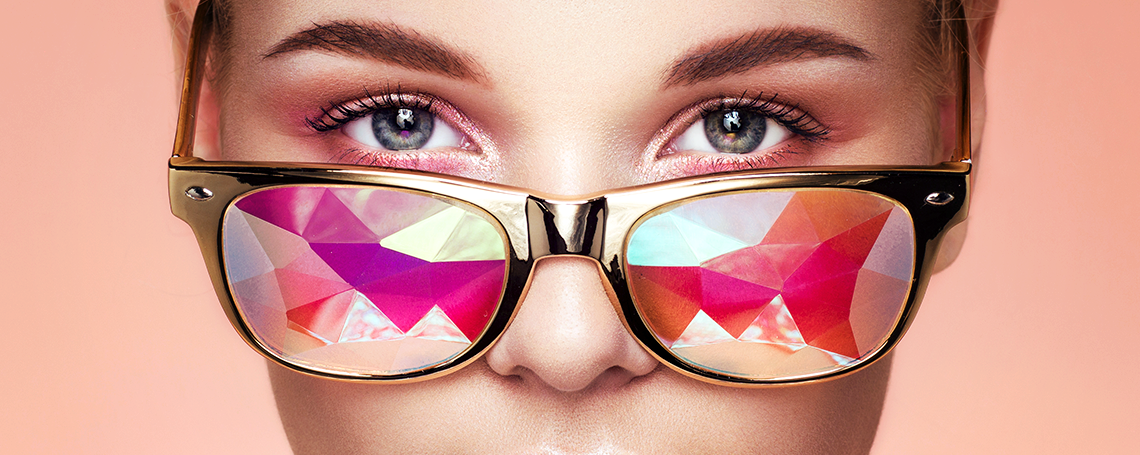Sunglasses or sun glasses informally called shades or sunnies more names below are a form of protective eyewear designed primarily to prevent bright sunlight and high-energy visible light from damaging or discomforting the eyes. They can sometimes also function as a visual aid, as variously termed spectacles or glasses exist, featuring lenses that are colored, polarized or darkened. In the early 20th century, they were also known as sun cheaters cheaters then being an American slang term for glasses Since the 1930s, sunglasses have been a popular fashion accessory, especially on the beach.
The American Optometric Association recommends wearing sunglasses that block ultraviolet radiation whenever a person is in the sunlight to protect the eyes from UV and blue light, which can cause several serious eye problems. Its usage is mandatory immediately after some surgical procedures, such as LASIK, and recommended for a certain time period in dusty areas, when leaving the house and in front of a TV screen or computer monitor after LASEK. It is important to note that dark glasses that do not block UV radiation can be more damaging to the eyes than not wearing eye protection at all, since they tend to open the pupil and allow more UV rays into the eye Sunglasses can improve visual comfort and visual clarity by protecting the eye from glare.
In prehistoric and historic time, Inuit peoples wore flattened walrus ivory "glasses", looking through narrow slits to block harmful reflected rays of the Sun In many different forms and with many different materials, the indigenous peoples of North America and northern Asia crafted highly efficient equipment to protect their eyes against the damaging effects of strong sunlight in snowy circumstances It is said that the Roman emperor Nero liked to watch gladiator fights using cut emeralds. These, however, appear to have worked rather like mirrors Sunglasses made from flat panes of smoky quartz, which offered no corrective powers but did protect the eyes from glare, were used in China in the 12th century or possibly earlier. Ancient documents describe the use of such crystal.
James Ayscough began experimenting with tinted lenses in spectacles in the mid-18th century, around 1752. These were not "sunglasses" as that term is now used; Ayscough believed that blue- or green-tinted glass could correct for specific vision impairments. Protection from the Sun's rays was not a concern for him One of the earliest surviving depictions of a person wearing sunglasses is of the scientist Antoine Lavoisier in 1772. Yellow/amber and brown-tinted spectacles were also a commonly prescribed item for people with syphilis in the 19th dubious – discuss and early 20th centuries because sensitivity to light was one of the symptoms of the disease n 1913, Crookes lenses were introduced made from glass containing cerium, which block ultraviolet light.
" Don't let wearing glasses slow your kid down. Find durable, trendy kids' glasses to keep them seeing clearly so they can focus on the fun"
The lenses of polarized sunglasses reduce glare reflected at some angles off shiny non-metallic surfaces, such as water. They allow wearers to see into water when only surface glare would otherwise be seen, and eliminate glare from a road surface.

Comments(2)
Kosmi Kotalia
The most widespread protection is against ultraviolet radiation, which can cause short-term and long-term ocular problems such as photokeratitis, snow blindness, cataracts, pterygium, and forms of eye cancer.
Kosmi Kotalia
More recently, high-energy visible light has been implicated as a cause of age-related macular degeneration before, debates had already existed as to whether "blue blocking".